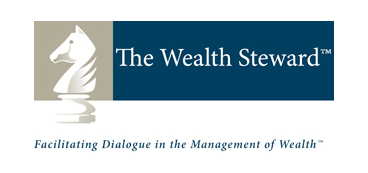By Dan Hallett on May 31, 2011
Earlier this year, I wrote about how to gauge the sustainability of monthly income funds’ fat distributions so that investors and advisors could make better decisions and set realistic expectations. Since then, I’ve received a steady stream of phone calls and emails, mostly expressing concern over many funds. However, one fund in particular keeps popping up in such inquiries, so I thought it was deserving of its own blog post.
Perhaps I shouldn’t be surprised by the continued interest in such funds but I am. Individual investors, financial advisors and industry regulators have contacted me to solicit my views on T-series or monthly income funds – both in general and for specific funds. Over the past five months, the one fund that has been most frequently mentioned is the RBC Managed Payout Solution – Enhanced Plus. So, let’s take this through our test for distribution sustainability.
Total Return Requirement
Recall that step one of assessing distribution sustainability is figuring out the total return, before fees, required to support the current distribution rate. This fund pays out distributions at an annual rate of 6.99% based on yesterday’s closing unit price ($0.0465 x 12 / $7.9881). But that’s net of the fund’s MER. Adding the 1.88% MER to the distribution rate gives us a total return requirement of 8.87% per year (6.99% + 1.88%). (Note that simply adding the MER to the net return – i.e. 6.99% + 1.88% – neglects to take into account the compounding effect of the management fee and operating expenses, which are charged daily. But I’ll stick with this for now in the interest of simplicity. More on this in a future blog post.)
So, RBC Managed Payout Solution – Enhanced Plus must generate a total return of 8.87% per year going forward to keep up its current distribution while keeping its unit price at the current level.
Contribution From Bonds & Cash
I used this fund’s allocation between government and corporate bonds to estimate the yield-to-maturity (YTM) of this fund’s bonds at 3% per year. Cash yields are about 1% annually. Hence, I estimate the contribution from bonds and cash at about 1.20% per annum, calculated as (37% x 3%) + (8% x 1%).
Back Out Required Returns from Stocks
In step one I determined the fund’s total return requirement at 8.87% per year. Bonds and cash combined are expected to pitch in about 1.20% of this requirement. The difference of 7.67% annually (8.87% – 1.20%) must come from the stock side of the portfolio. This sounds like a very reasonable target until you account for the fact that stocks only account for 55% of this fund’s assets.
To grow the fund’s total assets by 7.67% requires the 55% stock component to grow by 13.94% per annum. This figure is before fees and is far from a slam dunk. I’d go so far as say that this fund’s distribution is likely to be cut in time – though a cut could be years away. If the distribution isn’t cut, I would expect the fund’s unit price to fall over time.
Don’t believe me? It’s already happened. This fund was launched in April 2002 – near a market bottom at the time – at a price of $10 per unit. So, its unit price has already fallen by more than 20% over the past nine years. While the fund boasts an annualized return of 5.56% per year since its birth, that figure assumes that all distributions were fully reinvested into the fund. Those that have taken the distributions in cash have seen the value of their original units fall by 2% per year for nearly a decade.
Realistic Expectations
While our firm hasn’t done thorough due diligence on this fund, there are no serious problems apparent with this fund at first glance. The potential problem is how it is sold/marketed and what investors expect it to do over time. Those using a significant portion of this fund’s distributions to pay living expenses are at high risk in my opinion because the return requirement of the fund is quite high. If your basic expenses are covered and a big distribution cut (of 1/2) won’t change your lifestyle, a distribution cut would probably be inconsequential.
No matter your circumstances, the odds are stacked against the ability of this fund – and others like it – to continue paying out fat distributions and still grow the unit price. If that’s what you’re expecting from this fund (or other similar high-payout funds), disappointment is just a matter of time in my opinion. My advice is to adjust your expectations today, voluntarily, before a potential distribution cut is imposed upon you.
- Piling into U.S. stocks? Don’t Expect the Past Decade to Repeat - January 15, 2025
- The S&P 500’s Three Surprising Traits - November 6, 2024
- Savvy DIY Investors Must Plan For Succession - September 4, 2024



